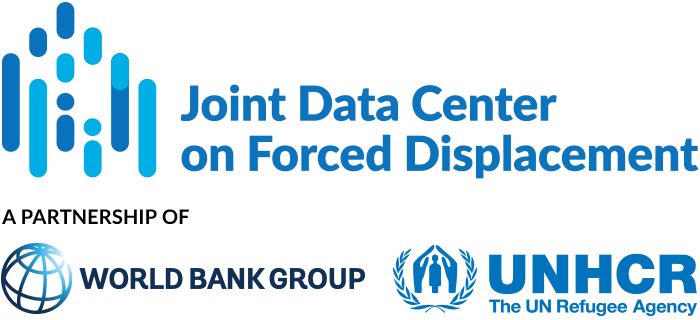This article examines the effects of UNICEF’s cash transfer program, Hajati, on social cohesion and connectedness in Jordan. Jordan is home to around 1.3 million Syrians, with half of them registered as refugees with the UNHCR.
The Hajati program offers unconditional cash transfers to households with children and adolescents under 18 years old who are attending school. This initiative supports both refugee families and vulnerable households within the host community. Beneficiary households receive a monthly cash amount of 20–25 Jordanian dinar (approximately US$28–36) per eligible school-aged child, for up to 4–6 children. In the 2019-20 period, Hajati supported around 11,000 children and adolescents. However, when schools closed in March 2020 due to the Covid-19 pandemic, UNICEF expanded the program to support over 30,000 children and adolescents. Additionally, young participants in Hajati were encouraged to enroll in services provided by UNICEF Jordan’s Makani (‘My Space’) program, which offers non-formal education support, life skills, and protection services.
The study employed a mixed methods approach to evaluate the impact of the Hajati program on social cohesion and connectedness among Syrian refugee households in Jordan. Quantitative data were collected through a phone survey conducted between October 2020 and January 2021, involving 996 adolescent–caregiver dyads, including 143 Hajati beneficiaries and 853 non-beneficiaries. The survey gathered information on household income, access to social protection programs, school enrollment, food security levels, physical and mental well-being, and sources of family and social support. Coping and resilience were assessed using the Brief Resilient Coping Scale (BRCS). To enrich the quantitative findings, qualitative data were obtained through interviews and focus groups, providing deeper insights into the mechanisms through which the Hajati cash transfer and the associated Makani empowerment programming influence adolescent resilience and psychosocial well-being.
Main findings:
- Hajati beneficiaries, particularly girls and older adolescents (aged 15–18), report higher levels of family support. Beneficiary status is associated with an 8-percentage point increase in the likelihood of adolescents reporting that their family is helping them cope with the stress of the pandemic. The increase is more pronounced for older adolescents (13 percentage points) and adolescent girls (15 percentage points), but no significant effect is observed for younger adolescents or adolescent boys.
- Hajati beneficiaries, especially girls and younger adolescents (aged 12-14), report better coping with pandemic stress and improved resilience measures. Beneficiary status is linked to a 12-percentage point increase in the likelihood of adolescents reporting effective coping with pandemic-related stress. The increase is slightly larger for younger adolescents (14 percentage points) and adolescent girls (16 percentage points). Additionally, adolescent girls from beneficiary households scored, on average, 1.076 points higher on the BRCS measure of resilience compared to their non-beneficiary peers.
- Among younger adolescents (aged 12-14) and girls, beneficiaries are more likely to report having a trusted adult and greater social support from non-family adults. For younger adolescents, Hajati is associated with a 12-percentage point increase in reporting at least one trusted adult. For adolescent girls, Hajati is linked to a 15-percentage point increase in reporting that an adult outside the household is helping them cope with pandemic stress.
- The program had little or no effects on peer connections, resilience, and social cohesion. Hajati had limited impact on peer connections during social distancing, with no significant differences in the likelihood of having trusted friends or in reporting that friends are helping cope with the pandemic. While adolescent girls who benefited from Hajati showed a small but significant increase in resilient coping compared to non-beneficiaries, overall resilience scores did not vary significantly by beneficiary status. Additionally, there were no significant differences in adolescents’ perceptions of social cohesion based on Hajati beneficiary status.
In-depth interviews revealed that the cash transfer helps refugee adolescents cope with the additional stressors of the pandemic by alleviating household economic stress. The qualitative findings also highlighted the program’s crucial role in fostering social connectedness with teachers and Makani mentors, who provided psycho-emotional support to adolescents. While the quantitative analysis did not find a significant association between the program and perceived levels of peer support, the qualitative data suggest that peer networks were vital to young people’s overall resilience. Linkages with the Makani empowerment programming were particularly important in facilitating these peer interactions, especially for girls. Additionally, the qualitative findings underscore that peer networks—especially those fostered by Makani programming—played a key role in helping both boys and girls cope with pandemic-related stresses and in promoting a sense of social cohesion among young people in host and refugee communities.
Overall, the study’s findings indicate that while the Hajati cash transfer program modestly enhances certain aspects of adolescent social connectedness and resilience, particularly for girls and older adolescents, its impact remains limited. The authors advocate for a “cash-plus” approach, which integrates cash transfers with empowerment programs like Makani to achieve better outcomes. They also recommend that cash-plus programs target both those directly affected by displacement and vulnerable households in host communities to reduce community tensions, especially as conflicts become increasingly protracted.


